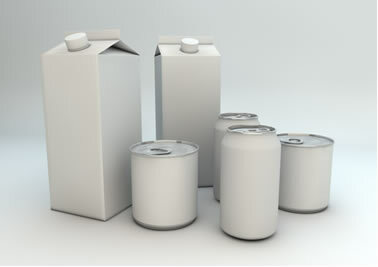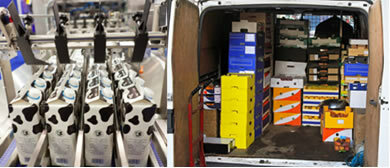Consumers are frightened by so much news of contaminated food, which mainly involves beverages such as soft drinks, juices and chocolate drinks. And this is actually something alarming, as various statistics show us that eating can be a risky task.
For example, about 130 million of people living in the WHO European Region (World Health Organization) are affected annually by foodborne illnesses. Also according to the WHO, in 1998, approximately 2.2 million of people, being 1.8 million children, died of diarrheal diseases worldwide.
In addition, this problem also represents a great loss in an economic sense for large food and beverage producers, who in addition to having a negative advertisement, decreasing the number of sales, may have to pay huge amounts of damages and lose a lot of money doing the recall (English word meaning "call back", being used to indicate a request for the return of a batch or an entire line of products made by the manufacturer).
No wonder new alternatives to make our foods safer are in sight. One of them was nominated by
Braskem, a company that manufactures chemical and petrochemical products for the most varied sectors, including plastics that are used in food industry packaging.
Braskem Petrochemical Image[1]
Patrick Teyssonneyre, director of innovation for the polymers area at Braskem, announced that the company intends to invest in the development of a “intelligent” packaging, with sensors sensitive to factors such as changes in temperature, pH and microorganisms, being able to indicate whether the food is contaminated.
They believe that within four years this package will be finished. Initially, however, it will not be used for all types of products, but for specific foods, and then it will be developed for others.

Smart packaging will contain a color-changing resin
The packaging will contain a resin that will change color when it reacts with oxygen levels and temperature, indicating if there was any leakage, any violation of the packaging, if the product is not at the proper temperature, which causes it to spoil, and will indicate if the food is degraded or contaminated.
This technological innovation will represent great advantages, as the producing companies are not able to inspect all the paths through which the food passes, for example, how suppliers are packing these products and their transport.

Production and transport of food products[2]
The change in color on the packaging will indicate where the problem was, whether in the production process, in transport, in the supplier (such as supermarkets) or in the consumer's own home. Now it remains to be seen how this technology will develop and what will become reality in the coming years.
* Editorial image credit:
[1] Author: Braskem Brazil/ Source: Wikimedia Commons;
[2] Left image: Author: Robert Kneschke/ Source: Shutterstock.com.
By Jennifer Fogaça
Graduated in Chemistry
Source: Brazil School - https://brasilescola.uol.com.br/quimica/embalagem-que-alerta-se-alimento-esta-contaminado.htm
